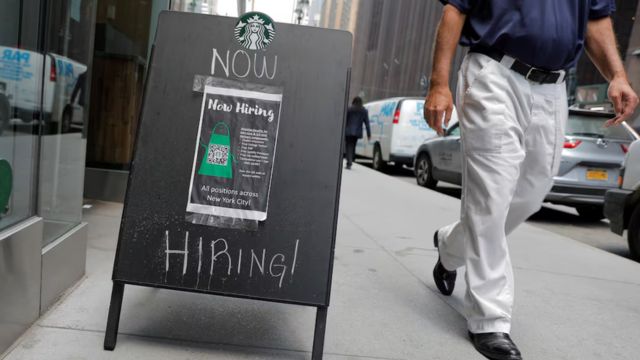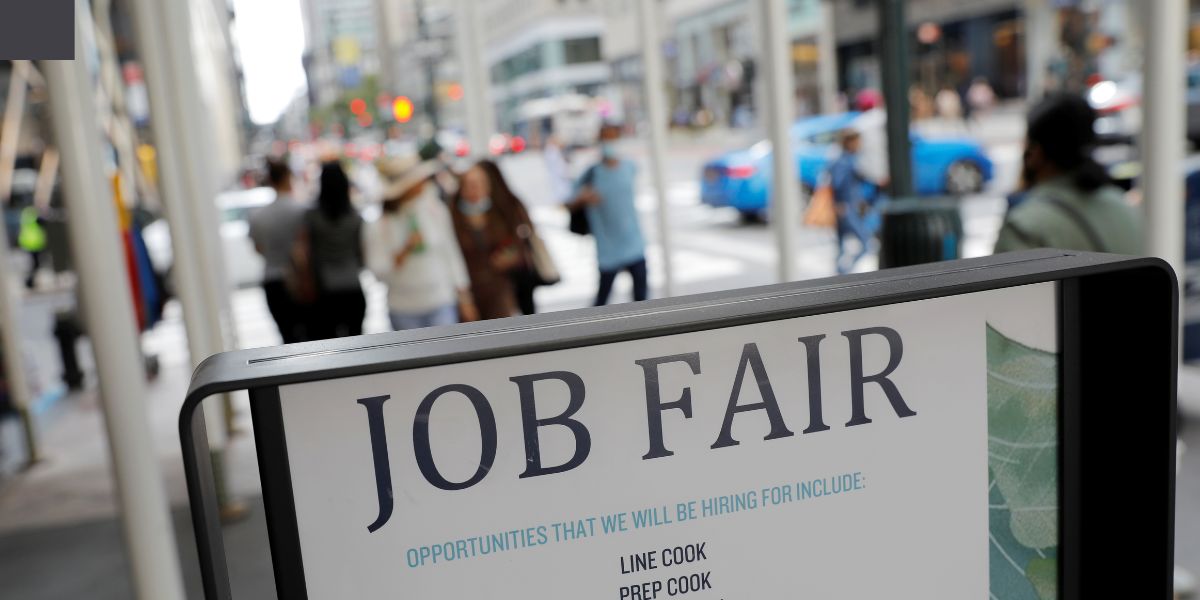The fast-food sector has been shaking its head at the disastrous effects California’s new minimum wage law has had on its operations.
Their unprocessed data appears to support that. The California Business and Industrial Alliance claimed in a full-page advertisement published in USA Today that since Governor Gavin Newsom signed the bill in September, the state had lost close to 10,000 fast-food employment.
The advertisement featured twelve different businesses, ranging from Cinnabon to Pizza Hut, whose local franchisees had either increased prices or reduced jobs, or were thinking about doing so. The establishments were labeled as “victims of Newsom’s minimum wage,” which went up from $16 to $20 for fast food starting on April 1.
Governor Newsom’s actions and this legislation’s lack of foresight are directly to blame for the swift layoffs, price increases, and company closures.
Regarding this allegation, there is something you may want to know. It’s thickly sliced baloney. In reality, according to data compiled by the Federal Reserve and the Bureau of Labor Statistics, fast-food employment in California increased over the advertisement’s coverage period of September through January. The assertion that it has decreased is a blatant fabrication based on official employment statistics.

The advertisement also fails to mention that employment in the fast-food industry increased after January. Employment in the fast-food and limited-service restaurant industry increased by about 7,000 jobs in April compared to April 2023, the month before Newsom signed the minimum wage measure.
Despite this, the number of jobs lost and the criticism of the minimum wage bill have spread like wildfire across conservative and corporate media outlets, including the Wall Street Journal, the New York Post, and the conservative Hoover Institution website.
SEE MORE –
Minimum Wage Hikes: Are They Causing More Teen Unemployment?
We’ll be examining more closely the deception employed by corporate lobbyists to make employment gains appear to be losses in the workforce. First, though, a brief overview of the fast-food industry’s economic climate.
Nobody would contest that operating a restaurant, whether it be a high-end sit-down establishment, a food truck or kiosk, or a franchised fast-food chain, is an easy job. Although it’s not the biggest expense in recent years, labor costs are still one of the numerous expenses that owners must deal with. That would be an increase in food prices.
For instance, Chipotle Mexican Grill, located in Newport Beach, revealed in its most recent annual report that the expenses of food, drinks, and packaging increased to $2.9 billion in 2022 from $2.6 billion in 2022; however, the expenditures as a percentage of revenue decreased to 29.5% from 30.1%. Labor expenses decreased from 25.5% of sales in 2022 to 24.7% of revenue in 2023, totaling $2.4 billion.
El Pollo Loco, located in Costa Mesa, saw a $3.5 million, or 2.7%, decrease in labor and related costs last year despite a $4.1 million increase that the company attributed to “competitive pressure”—that is, the need to pay more to attract workers in a competitive labor market.
Rubio’s Coastal Grill comes next. The Carlsbad restaurant group said on June 3 that it has shuttered 48 of its 134 sites in California, or almost one-third of them. Rubio’s blamed the closures to the growing expense of doing business in California, as my colleague Don Lee noted.
But there’s more to the tale. The largest cost Rubio’s has been dealing with is debt, which has increased since the business was bought by the private equity firm Mill Road Capital in 2010. The business filed for bankruptcy in 2020 with $72.3 million in outstanding debt. In fact, the firm admitted that it was facing a “unsustainable debt burden” in addition to rises in the minimum wage in its complete declaration submitted with the bankruptcy court on June 5.
By the end of 2020, the firm had emerged from bankruptcy thanks to settlements that included a decrease in its debt. The epidemic then struck, posing a serious obstacle. Once more, debt was a problem for it; $72.9 million was owing to TREW Capital Management, a company that specialized in financing to struggling restaurant businesses, which was also one of its creditors. On June 5, two days after announcing its shop closings, it filed for bankruptcy once more. The matter is not yet resolved.
Seasonal variables (red line) cause a decline in fast-food and other restaurant jobs every year from October through January; seasonal adjustments (blue line) provide a more realistic picture of employment patterns. The pandemic was the reason for 2020’s steep decrease. (St. Louis Federal Reserve Bank)
It’s important to note that excessive debt is frequently a characteristic of private equity takeovers; in these situations, burdening an acquired firm with debt allows the acquirers to extract cash from the business, even if it makes it more difficult for the enterprises to become profitable. It’s unclear if that has anything to do with Rubio’s current struggles.
SEE MORE –
New Rules! Newsom Pushes Back CA Health Care Minimum Wage Increase to July 1 or Beyond
This leads us back to the argument that the new minimum wage law in California is to blame for the loss of jobs at fast-food chains.
The Wall Street Journal, which revealed on March 25 that eateries around California were laying off employees in advance of the minimum wage raise going into effect on April 1, seems to be the source of the claim.
Employment at fast-food and “other limited-service eateries” in California was reported to be 726,600 in January, “down 1.3% from last September,” when Newsom signed the minimum wage bill, according to the story. As a result, there were 736,170 employed people in September, indicating a 9,000 job loss from September to January.
Professor of economics at UCLA Lee E. Ohanian utilized data from the Journal as fodder for an article he posted on the Hoover Institution website on April 24. Ohanian is a senior fellow at the Hoover Institution.
The rate of job losses in the fast-food industry, according to Ohanian, was significantly faster than the state’s overall decline in private employment from September to January. This, he wrote, “makes it tempting to conclude that many of those lost fast-food jobs resulted from the higher labor costs employers would need to pay” once the new law went into effect.
In its USA Today advertisement, CABIA claimed that the minimum wage law had resulted in the loss of “nearly 10,000” fast-food employment, citing Ohanian’s piece as the source. Tom Manzo, the president and founder of CABIA, states on the group’s website that “the rapid job cuts, rising prices, and business closures are a direct result of Gov. Newsom and this short-sighted legislation.”
The issue with the statistic is as follows: It is based on an official government data that is not seasonal. This is important to know when tracking jobs in seasonal businesses, like restaurants, because their employment and business patterns change predictably throughout the year. For this reason, when laying out employment trend lines in certain industries, economists often prefer seasonally adjusted numbers.
The numbers from the Wall Street Journal match non-seasonally adjusted employment data for fast food restaurants in California that is released by the Bureau of Labor Statistics. (I must thank the outstanding financial blogger Barry Ritholtz and his associate, the anonymous Invictus, for drawing attention to this problem.)
The Federal Reserve Bank of St. Louis released statistics for California fast-food restaurants that indicate, seasonally adjusted, employment increased by 6,335 positions from 736,160 to 742,495 for the September to January period.
That’s not to argue that certain fast-food restaurants and other businesses in the hospitality sector haven’t made job cuts this year. Employers’ manipulation of data, in the eyes of laid-off workers, doesn’t make the agony of losing their employment any less painful.
However, as noted by Ritholtz and Invictus, it is hornbook economics that year-to-year comparisons, which eliminate seasonal patterns, are the appropriate method for handling non-seasonally adjusted data.
When we do this with the fast-food numbers from California, the picture that CABIA presents is not the same. September employment in the industry increased from a seasonally adjusted 730,000 in 2022 to 736,160 in 2023. Employment increased from 732,738 in 2023 to 742,495 in January of current year.
Lobbyists for restaurants cannot claim to be ignorant of the notion of seasonality. It’s been known about the company for, well, forever.
Mother’s Day and Father’s Day are “two of the busiest restaurant days of the year,” and pleasant weather encourages patrons to eat outside more frequently. Toast, a restaurant consulting company, even provides advice to restaurant owners on how to handle the phenomenon, noting that “April to September is the busiest season of the year.”
When is it the slowest? From November to January, “when many people travel for holidays like Thanksgiving or Christmas and spend time cooking and eating with family.”
To put it another way, the Journal, the lobbyists, and the people who supported them all predicated their statements of alarm on an established trend that each year sees restaurant employment peak in September and then decline through January.
They made the decision to attribute the pattern—which obviously had nothing to do with the minimum wage law in California—to it. Although it is impossible to peek into their hearts and souls, their arguments appear a tad bit cynical given the situation.
CABIA’s Manzo said by email that the alliance’s source for the job-loss statistic in its advertisement was the Hoover Institution, whose “work and credibility speaks for itself.”
As for the source, he is mistaken. Ohanian explicitly drew the number he cited in his Hoover Institution post from the Wall Street Journal; he didn’t do any independent analysis.
Ohanian acknowledged by email that “if the data are not seasonally adjusted, then no conclusions can be drawn from those data regarding AB 1228,” the minimum wage law. In preparation for writing about it later this summer, he stated he would ask the Wall Street Journal about the matter and that he understood the Journal’s numbers as seasonally adjusted.
When I asked Heather Haddon, the author of the Wall Street Journal story, why she seemed to use non-seasonally adjusted statistics when the corrected figures made more sense, she didn’t respond.
Ohanian did observe, quite properly, that the labor cost increase from the law was large and that “if franchisees continue to face large food cost increases later this year, then the industry will really struggle.”
Fast-food companies already have instituted sizable price increases to cover their higher expenses, he observed. “The question thus becomes how sensitive are fast-food consumers to higher prices,” a topic he says he will be researching as the year goes on.
